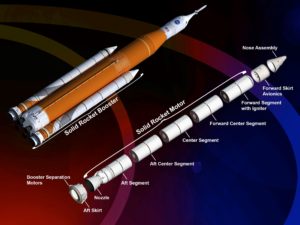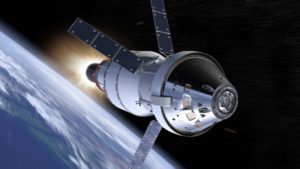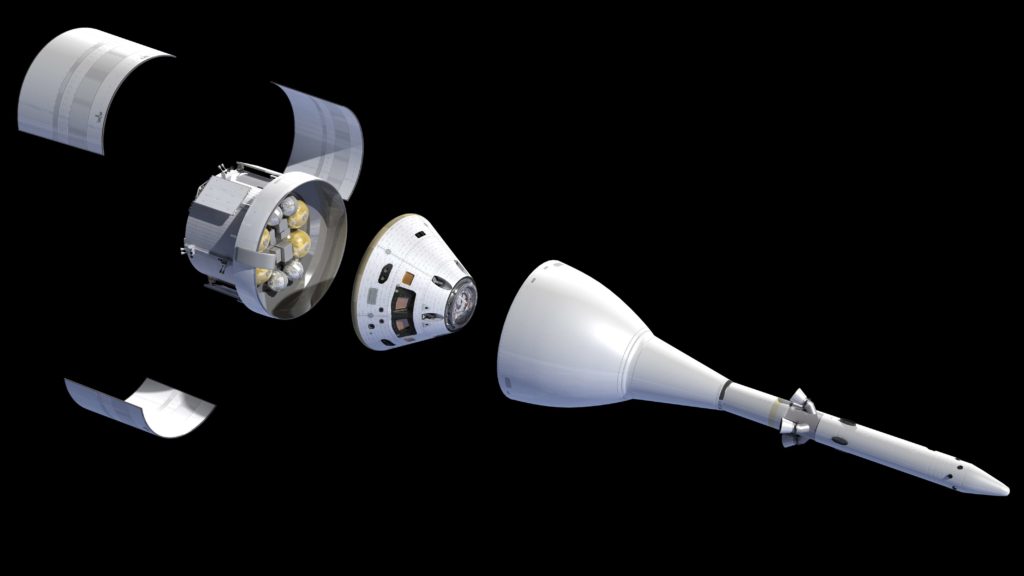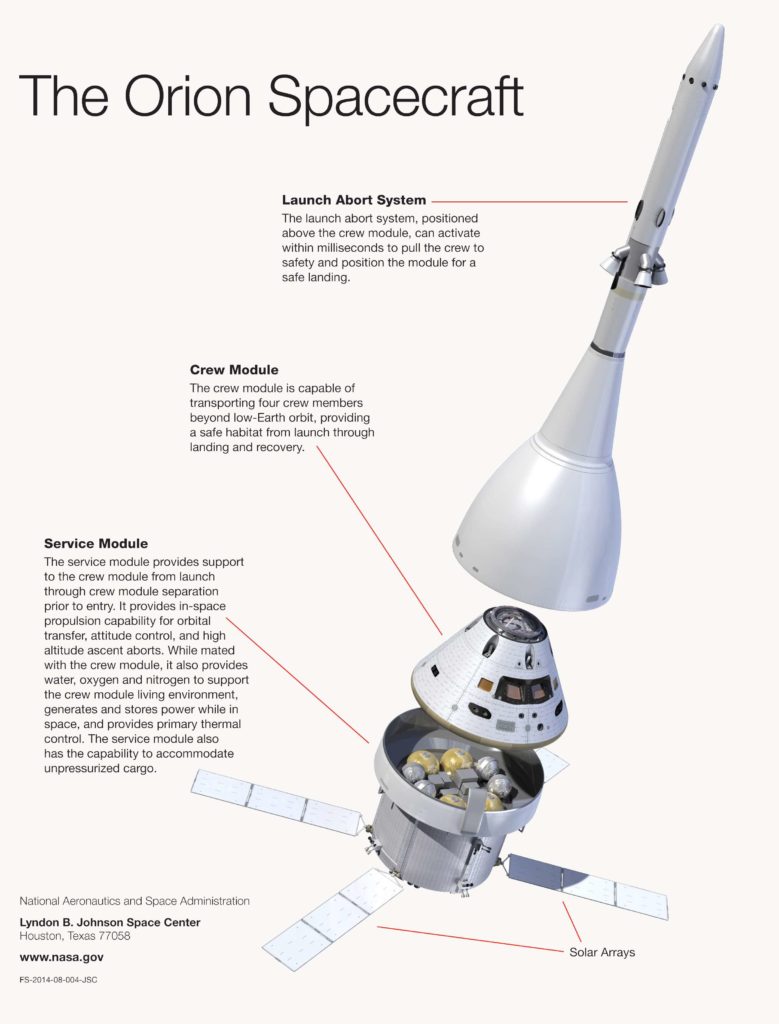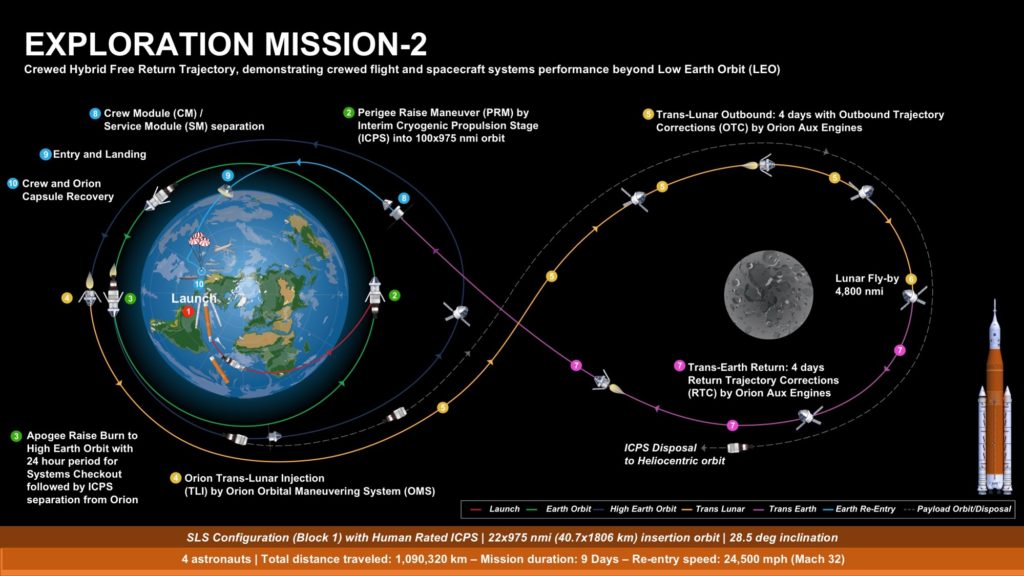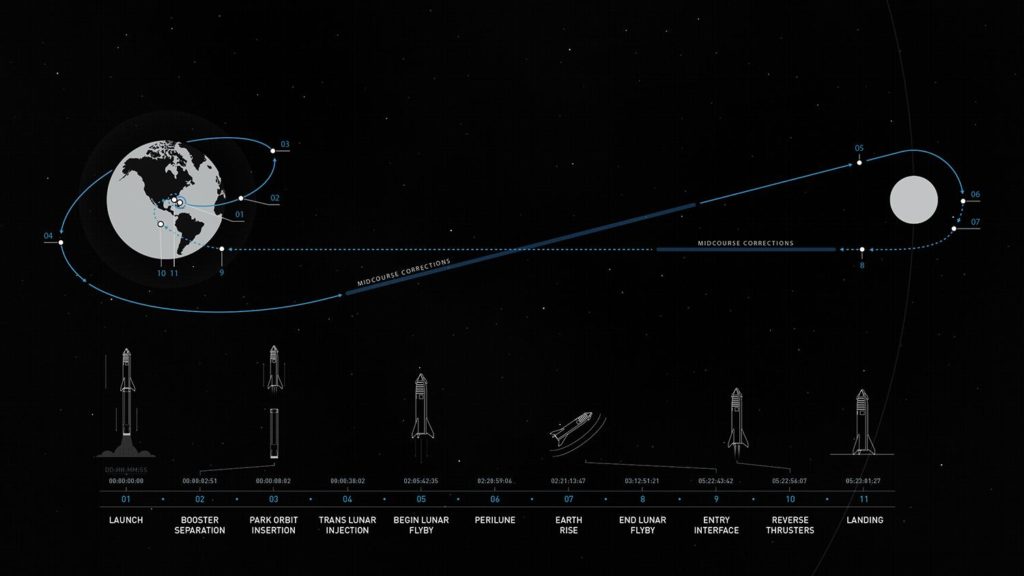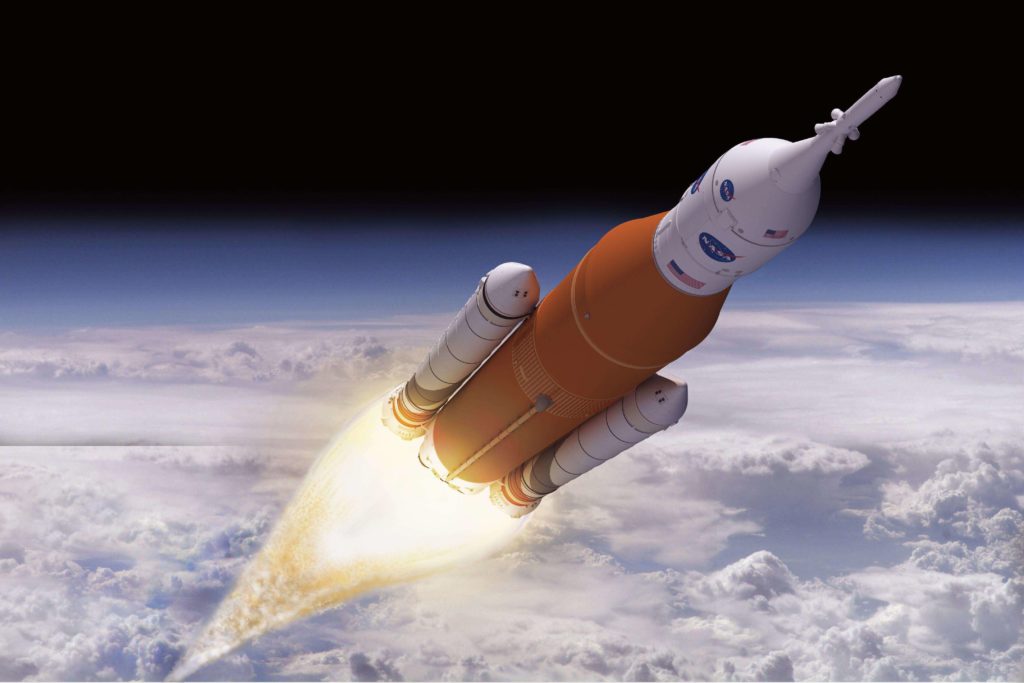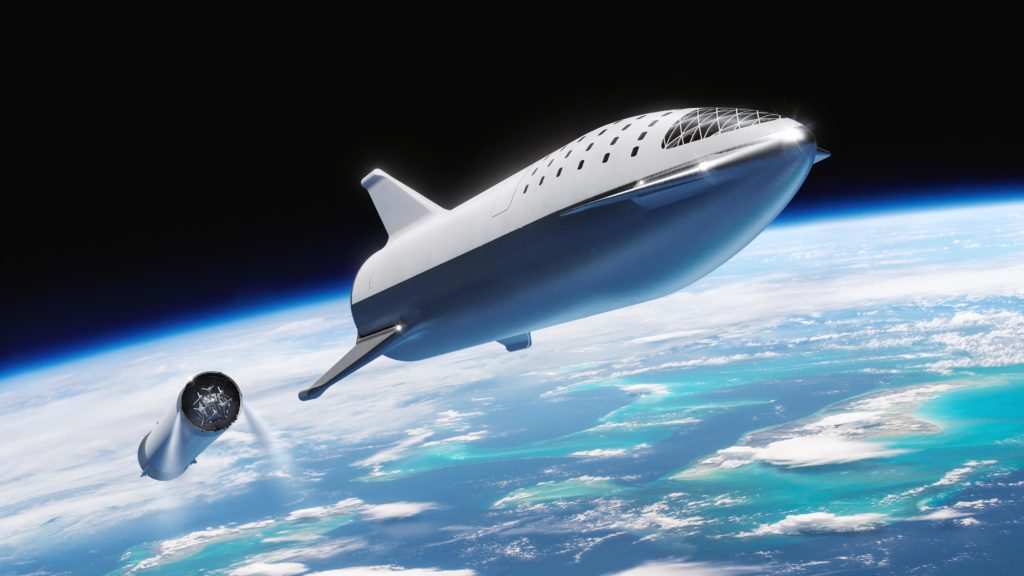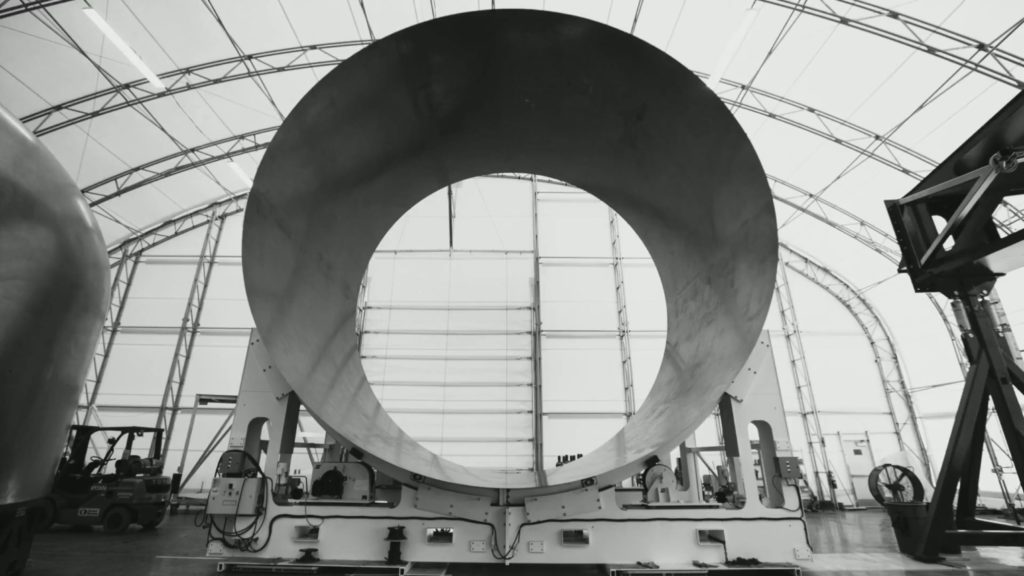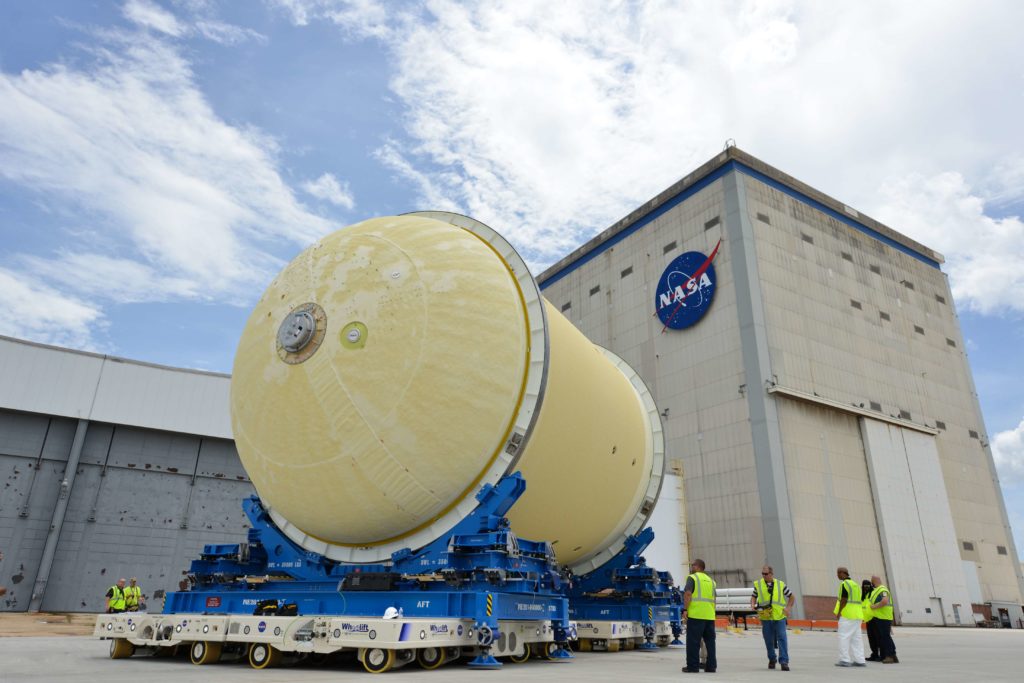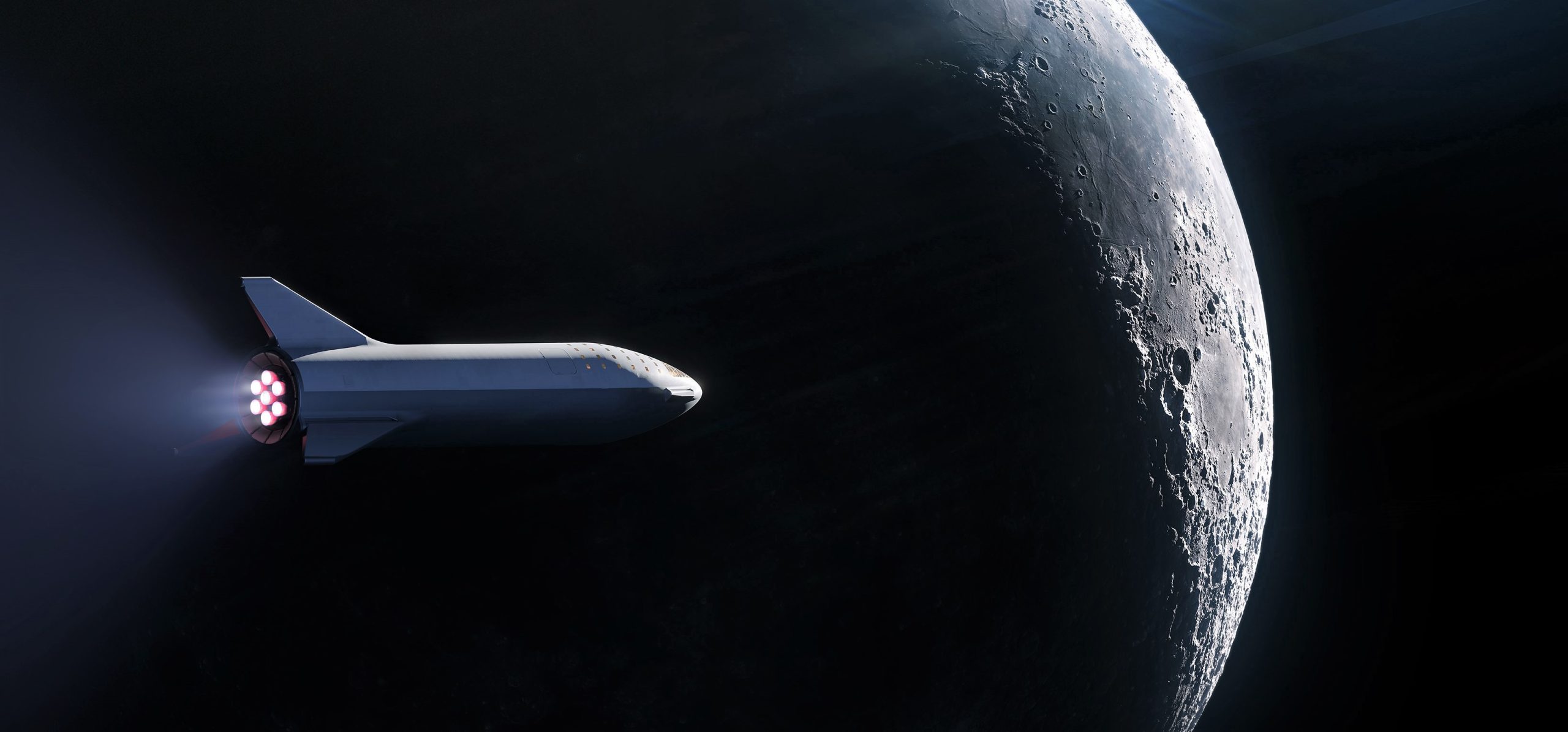
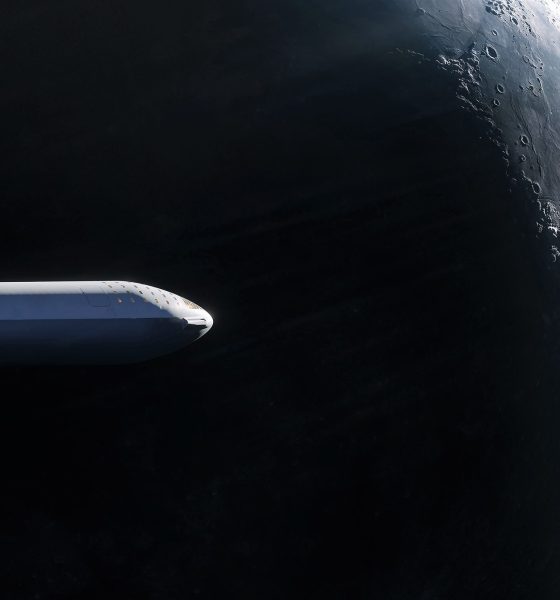
News
SpaceX and NASA accidentally set the stage for a new race to the Moon
Almost entirely driven by chance, SpaceX and NASA may soon find themselves in an unintentional race to return humans to the Moon for the first time in half a century.
Both entities – SpaceX with its next-generation BFR and NASA with its Shuttle-derived SLS – are tentatively targeting 2023 for their similar circumlunar voyages, in which NASA astronauts and private individuals could theoretically travel around the Moon within just months of each other, showcasing two utterly dissimilar approaches to space exploration.

Over the course of no fewer than seven years of development, NASA’s SLS rocket and Orion spacecraft have run into an unrelenting barrage of issues, effectively delaying the system’s launch debut at a rate equivalent to or even faster than the passage of time itself. In other words, every month recently spent working on the vehicle seems to have reliably corresponded with at least an additional month of delays for the launch system.
Why these incessant delays continue to occur is an entire story in itself and demands the acknowledgment of some uncomfortable and inconvenient realities about the state of NASA’s human spaceflight program in the 21st century, but that is a story is for another time.
- SLS. (NASA)
- NASA’s Orion spacecraft, European Service Module, and ICPS upper stage. (NASA)
A different kind of paper rocket
Returning to SLS, a brief overview is in order to properly contextualize what exactly the rocket and spacecraft are and what exactly their development has cost up to now. SLS is comprised of four major hardware segments.
- The Core Stage: A massive liquid hydrogen/liquid oxygen rocket booster, this section is essentially a lengthened version of the retired Space Shuttle’s familiar orange propellant tank, while the stage’s four engines are quite literally taken from stores of mothballed Space Shuttle hardware and will be ingloriously expended after each launch (SLS is 100% expendable).
- Solid Rocket Boosters (SRBs): Minimally modified copies of the SRBs used during the Space Shuttle program, SLS’ SRBs have slightly more solid propellant and have had all hints of reusability removed, whereas Space Shuttle boosters deployed parachutes and were reused after landing in the Atlantic Ocean.
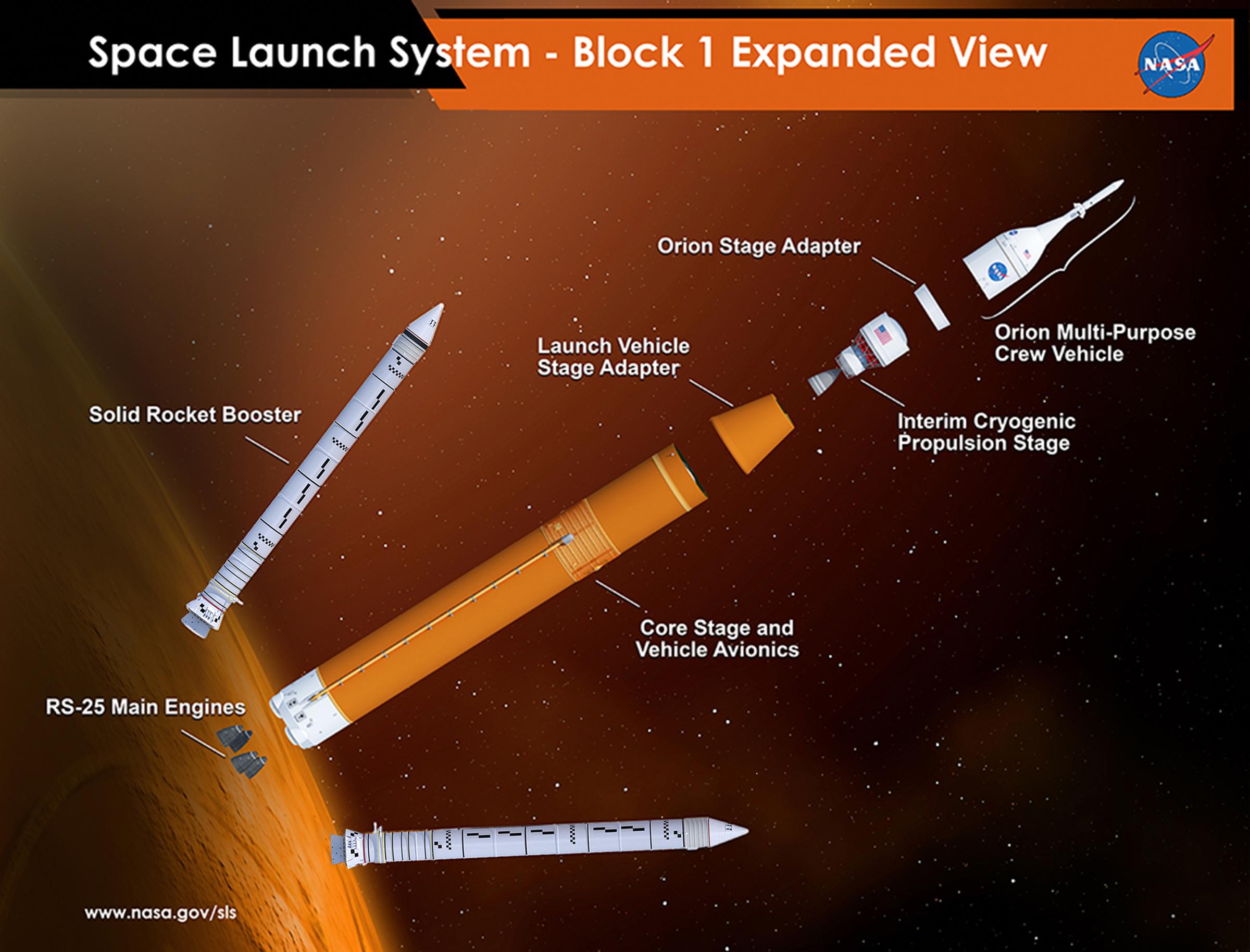
- The Upper Stage (Interim Cryogenic Propulsion System, ICPS): ICPS is a slightly modified version of ULA’s off-the-shelf Delta IV upper stage.
- The Orion spacecraft and European Service Module: Borrowing heavily from the Apollo Command and Service Modules that took humanity to the Moon in the 1960s and 70s, Orion has been in funded development in one form or another for more than 12 years, with just one partial flight-test to call its own. Orion’s development has cost the U.S. approximately $16 billion since 2006, with another $4-6 billion expected between now and 2023, a sum that doesn’t account for the costs of production and operations once development is complete.
- The Orion spacecraft and ESM. (NASA)
For the SLS core stage and SRBs, a generous bottom-rung estimate indicates that $14 billion has been spent on the rocket itself between 2011 and 2018, not including many billions more spent refurbishing and modifying the rocket’s aging Saturn and Shuttle-derived launch infrastructure at Kennedy Space Center. Of the many distressing patterns that appear in the above descriptions of SLS hardware, most notable is a near-obsessive dependence upon “heritage” hardware that has already been designed and tested – in some cases even manufactured.
Despite cobbling together or reusing as many mature components, facilities, and workforces as possible and relying on slightly-modified commercial hardware at every turn, SLS and Orion will somehow end up costing the United States more than $30 billion dollars before it has completed a single full launch; potentially rising beyond $40 billion by the time the system is ready to launch NASA astronauts.
Moonward bound
SLS’ first crewed mission, known as Exploratory Mission-2 (EM-2), brings us to the title – NASA’s mission planning has settled on sending a crew of four astronauts on what is known as a Free Lunar Return trajectory in the Orion spacecraft, essentially a single flyby of the Moon. Official NASA statements appear to be sending mixed messages on the schedule for EM-2’s launch, with September 2018 presentations indicating 2022 while a late-August blog post suggests that the crewed circumlunar mission is targeting launch in 2023.
As it happens, SpaceX announced its own plans for a (private) crewed circumlunar voyage less than two weeks ago. Funded in large part by Japanese billionaire Yasuka Maezawa, SpaceX’s hopes to send 10+ people to the Moon on its next-generation BFR launch vehicle, comprised of a fully-reusable booster and spaceship. Deemed Dear Moon by Maezawa, SpaceX is targeting an extremely ambitious launch deadline sometime in 2023, although CEO Elon Musk frankly noted that hitting that 2023 window would require all aspects of BFR booster and spaceship development to proceed flawlessly over the next several years.
Compared to the 10+ years and $30+ billion of development SLS and Orion will have taken before their first full launch, SpaceX is targeting the first orbital BFR test flights as early as 2020 or 2021, self-admittedly optimistic deadlines that will likely slip. Still, betting against SpaceX completing its first BFR launch sometime in the early to mid-2020s for something approximating Musk’s $2-10 billion development cost seems a risky move in the context of SpaceX’s undeniable track record of proving the old-guard wrong.
- NASA’s EM-2 circumlunar voyage. (NASA)
- SpaceX’s own circumlunar trajectory, nearly identical. (SpaceX)
- SLS Block 1. (NASA)
- BFR’s spaceship and booster (now Starship and Super Heavy) separate in a mid-2018 render of the vehicle. (SpaceX)
It must be noted that the apparent alignment of both SpaceX and NASA’s first crewed circumlunar missions with new rockets and spacecraft is a fluke of chance, and the fact that it may or may not take the shape of a second race to the Moon – pitting two dramatically different ideologies and organizational approaches against each other – is purely coincidental.
However, despite the undeniable fact that NASA and SpaceX are deeply and cooperatively involved through Crew and Cargo Dragon and despite Musk’s genuine affirmations of support and admiration for the space agency, it can be almost guaranteed that the world will look on in the 2020s with the same underlying emotions and motivations that were globally present during the Apollo Program. Rather than a battle of economic and nationalistic ideologies, the New Space Race of the 2020s will pit two (publicly) amicable private and public entities against each other at the same time as they work hand-in-hand to deliver crew and cargo to the International Space Station.
- An overview of BFR’s booster and spaceship, now known as Super Heavy and Starship. (SpaceX)
- SpaceX has already completed the first of many carbon-composite sections of its prototype spaceship. (SpaceX)
- SLS’ movable launch pad is very slowly being prepared for a 2020/2021 debut. (Tom Cross)
- SLS undoubtedly has several steps up on BFR in terms of volume of hardware in work, although target launch dates are quite similar for both rockets. (NASA)
Critically, this new “race” will be fairly illusory. Thanks to the fact that the new goal of human spaceflight appears to be the sustainable exploration of the solar system, there will inherently be no Apollo-style finish line for any one company or country or agency to cross. Rather than the Apollo Program’s shortsighted economic motivations and its consequentially abrupt demise, the end-result of this new age of competition will be the establishment of humanity as a (deep) spacefaring species, be it a temporary burst of effort or a permanent human condition.
Buckle up.
For prompt updates, on-the-ground perspectives, and unique glimpses of SpaceX’s rocket recovery fleet check out our brand new LaunchPad and LandingZone newsletters!

News
Wedbush’s Dan Ives sees ‘monster year’ ahead for Tesla amid AI push
In a post on X, the analyst stated that the electric vehicle maker could hit a $3 trillion market cap by the end of 2026 in a bullish scenario.

Wedbush analyst Dan Ives is doubling down on Tesla’s (NASDAQ:TSLA) long-term upside. In a post on X, the analyst stated that the electric vehicle maker could hit a $3 trillion market cap by the end of 2026 in a bullish scenario, thanks to the company’s efforts to develop and push its artificial intelligence programs.
An aggressive valuation upside
Ives, Wedbush’s global head of tech research, stated in his post that Tesla is entering a pivotal period as its autonomy and robotics ambitions move closer to commercialization. He expects Tesla’s market cap to reach $2 trillion in 2026, representing roughly 33% upside from current levels, with a bull case up to a $3 trillion market cap by year-end.
Overall, Ives noted that 2026 could become a “monster year” for TSLA. “Heading into 2026, this marks a monster year ahead for Tesla/Musk as the autonomous and robotics chapter begins. We believe Tesla hits a $2 trillion market cap in 2026 and in a bull case scenario $3 trillion by end of 2026… as the AI chapter takes hold at TSLA,” the analyst wrote.
Ives also reiterated his “Outperform” rating on TSLA stock, as well as his $600 per share price target.
Unsupervised Full-Self Driving tests
Fueling optimism is Tesla’s recent autonomous vehicle testing in Austin, Texas. Over the weekend, at least two Tesla Model Ys were spotted driving on public roads without a safety monitor or any other occupants. CEO Elon Musk later confirmed the footage of one of the vehicles on X, writing in a post that “testing is underway with no occupant in the car.”
It remains unclear whether the vehicle was supported by chase cars or remote monitoring, and Tesla has not disclosed how many vehicles are involved. That being said, Elon Musk stated a week ago that Tesla would be removing its Safety Monitors from its vehicles “within the next three weeks.” Based on the driverless vehicles’ sightings so far, it appears that Musk’s estimate may be right on the mark, at least for now.
News
Production-ready Tesla Cybercab hits showroom floor in San Jose
Tesla has implemented subtle but significant updates to both the Cybercab’s exterior and interior elements.
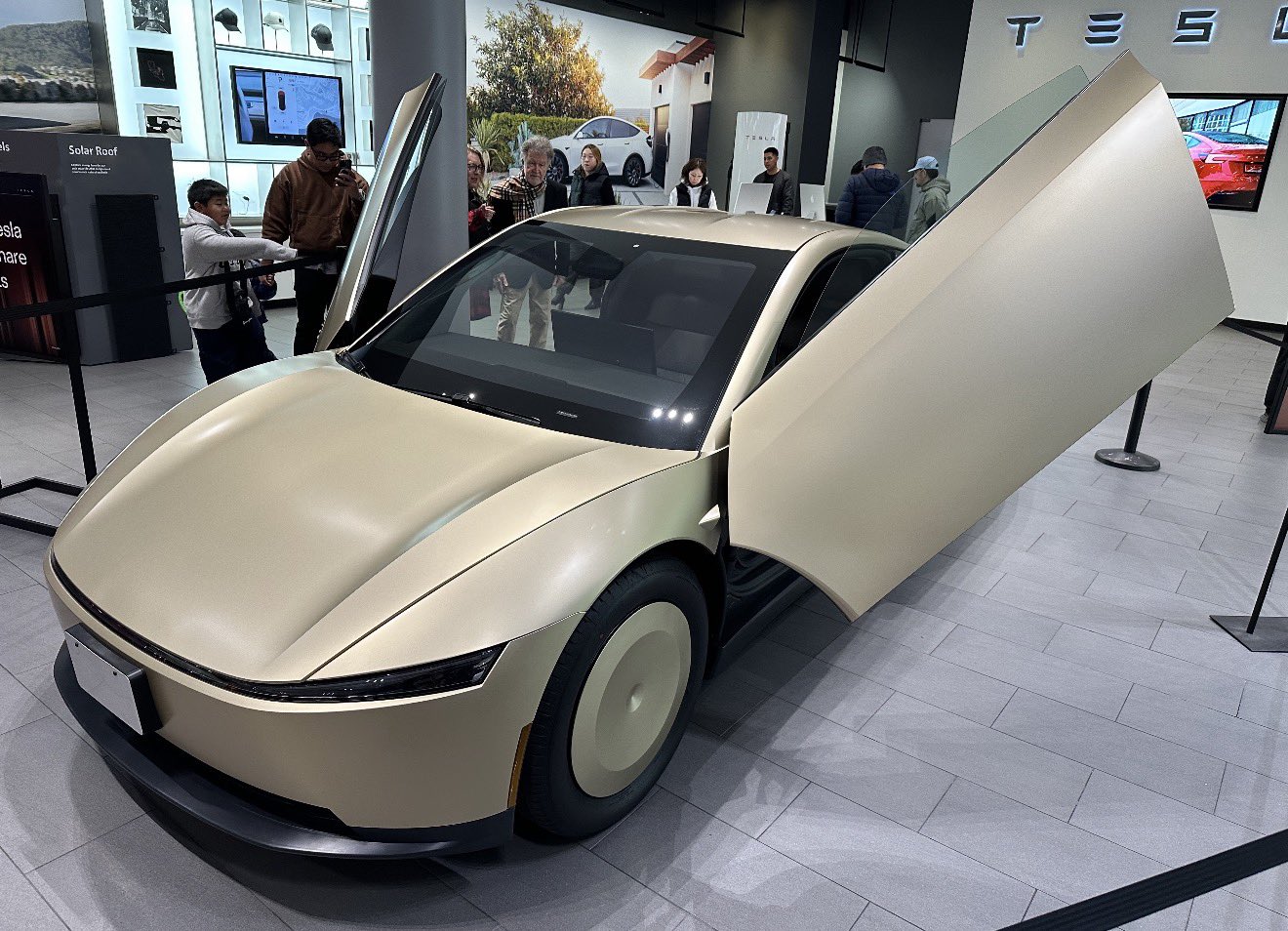
Tesla has showcased what appears to be a near-production-ready Cybercab at its Santana Row showroom in San Jose, California, giving visitors the closest look yet at the autonomous two-seater’s refined design.
Based on photos of the near-production-ready vehicle, the electric vehicle maker has implemented subtle but significant updates to both the Cybercab’s exterior and interior elements, making the vehicle look more polished and seemingly more comfortable than its prototypes from last year.
Exterior and interior refinements
The updated Cybercab, whose photos were initially shared by Tesla advocate Nic Cruz Patane, now features a new frameless window design, an extended bottom splitter on the front bumper, and a slightly updated rear hatch. It also includes a production-spec front lightbar with integrated headlights, new wheel covers, and a license plate bracket.
Notably, the vehicle now has two windshield wipers instead of the prototype’s single unit, along with powered door struts, seemingly for smoother opening of its butterfly doors. Inside, the Cybercab now sports what appears to be a redesigned dash and door panels, updated carpet material, and slightly refined seat cushions with new center cupholders. Its legroom seems to have gotten slightly larger as well.
Cybercab sightings
Sightings of the updated Cybercab have been abundant in recent months. At the end of October, the Tesla AI team teased some of the autonomous two-seater’s updates after it showed a photo of the vehicle being driven through an In-N-Out drive-through by employees in Halloween costumes. The photos of the Cybercab were fun, but they were significant, with longtime Tesla watchers noting that the company has a tradition of driving its prototypes through the fast food chain’s drive-throughs.
Even at the time, Tesla enthusiasts noticed that the Cybercab had received some design changes, such as segmented DRLs and headlamps, actual turn signals, and a splitter that’s a lot sharper. Larger door openings, which now seem to have been teasing the vehicle’s updated cabin, were also observed at the time.
Investor's Corner
Tesla analyst realizes one big thing about the stock: deliveries are losing importance
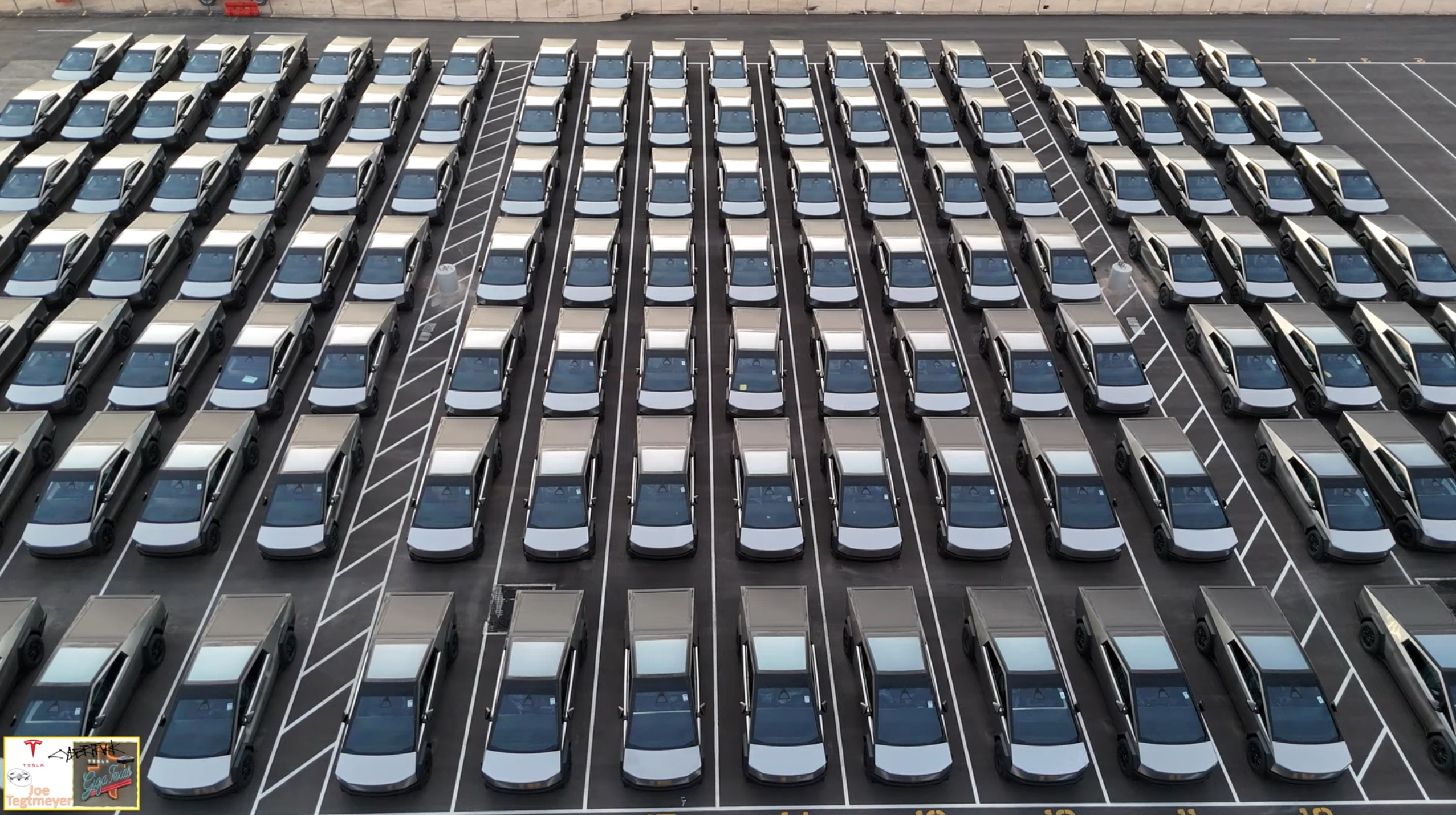
Tesla analyst Dan Levy of Barclays realized one big thing about the stock moving into 2026: vehicle deliveries are losing importance.
As a new era of Tesla seems to be on the horizon, the concern about vehicle deliveries and annual growth seems to be fading, at least according to many investors.
Even CEO Elon Musk has implied at times that the automotive side, as a whole, will only make up a small percentage of Tesla’s total valuation, as Optimus and AI begin to shine with importance.
He said in April:
“The future of the company is fundamentally based on large-scale autonomous cars and large-scale and large volume, vast numbers of autonomous humanoid robots.”
Almost all of Tesla’s value long-term will be from AI & robots, both vehicle & humanoid
— Elon Musk (@elonmusk) September 11, 2023
Levy wrote in a note to investors that Tesla’s Q4 delivery figures “likely won’t matter for the stock.” Barclays said in the note that it expects deliveries to be “soft” for the quarter.
In years past, Tesla analysts, investors, and fans were focused on automotive growth.
Cars were truly the biggest thing the stock had to offer: Tesla was a growing automotive company with a lot of prowess in AI and software, but deliveries held the most impact, along with vehicle pricing. These types of things had huge impacts on the stock years ago.
In fact, several large swings occurred because of Tesla either beating or missing delivery estimates:
- January 3, 2022: +13.53%, record deliveries at the time
- January 3, 2023: -12.24%, missed deliveries
- July 2, 2024: +10.20%, beat delivery expectations
- October 3, 2022: -8.61%, sharp miss due to Shanghai factory shutdown
- July 2, 2020: +7.95%, topped low COVID-era expectations with sizeable beat on deliveries
It has become more apparent over the past few quarters that delivery estimates have significantly less focus from investors, who are instead looking for progress in AI, Optimus, Cybercab, and other projects.
These things are the future of the company, and although Tesla will always sell cars, the stock is more impacted by the software the vehicle is running, and not necessarily the vehicle itself.
